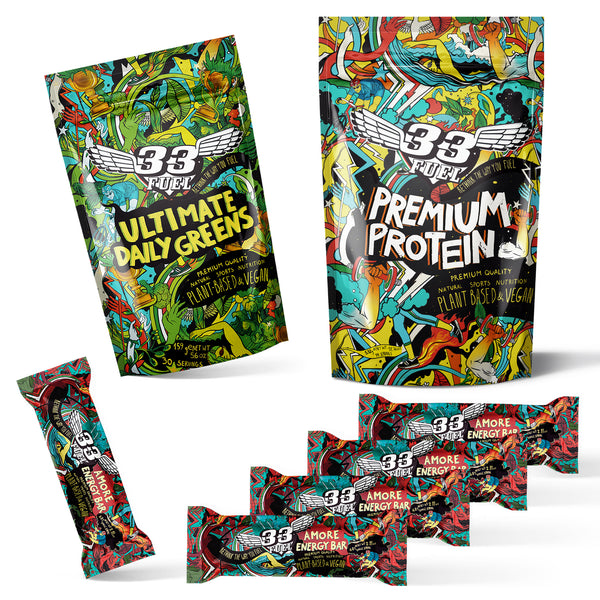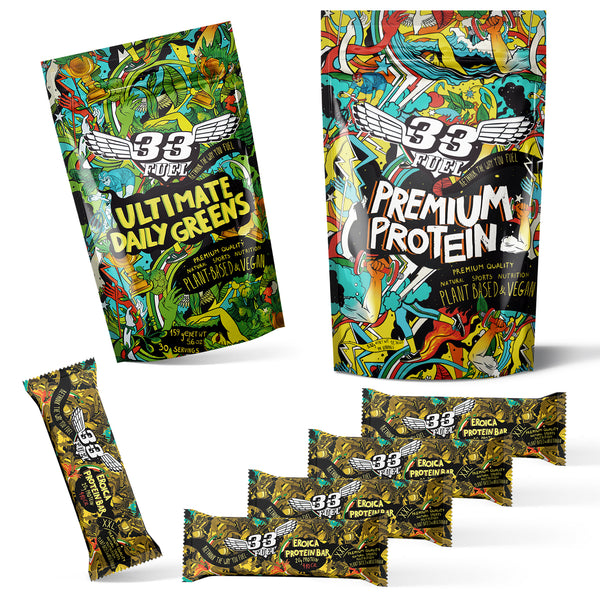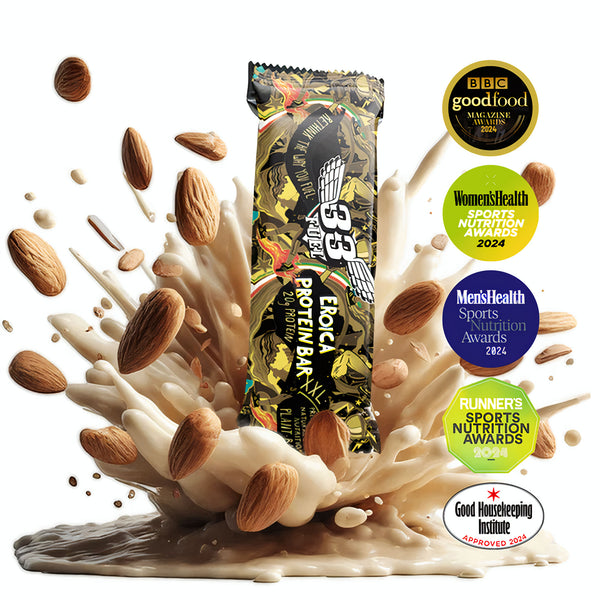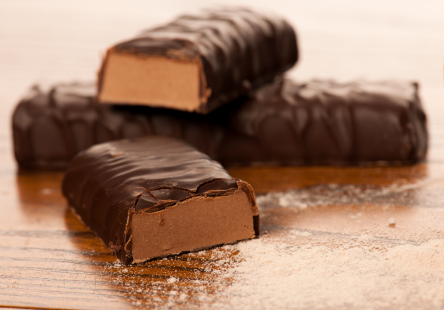Polarised Training For Endurance - Yes or No?
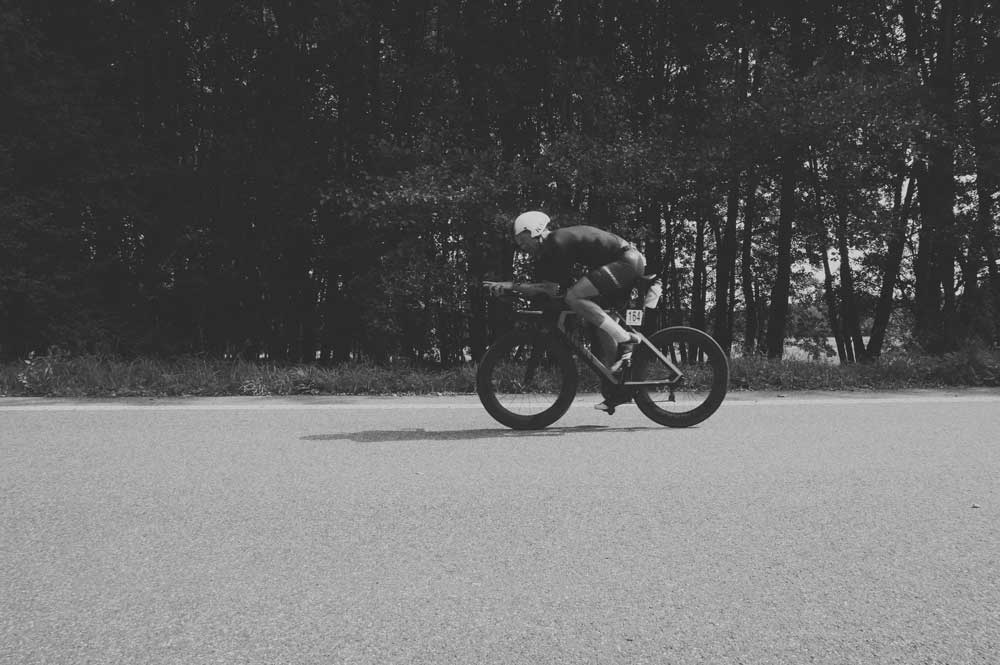
The 80/20 model of polarised training has long been flagged at the the the best method to improve as an endurance athlete. But what is it, how do you adopt it, and what are the most common mistakes?
Shop our award-winning endurance nutrition
Research into optimal training for endurance has been taking place for over a century and has consistently shown the greatest performance gains come from the 80/20 model of polarised training.
The concept is simple. You go ‘very easy’ for the majority of your training (80%) and ‘very hard’ for the remaining 20%.
The hypothesis is that the easy work helps build a solid endurance base without overstressing the body, allowing you to recover for the really hard sessions that drive positive physiological adaptations.

Polarised training can provide great performance gains - as long as it doesn’t head south
If you want to delve deeper into the research, a good place to start is the work of Professor Stephen Seiler from the University of Agder in Norway, who has studied a variety of endurance athletes from cyclists to rowers, cross-country skiers to distance runners.
For this blog, though, let’s look at what the practical application of polarised training means for hard-charging amateurs.
Is polarised training right for me?
Any amateur athlete should prioritise health and enjoyment over performance. If you’re not relishing your hobby, motivation will drop like a stone.
Training should be enjoyable and if that means repeating steady-state runs with friends or the family dog day-in, day-out, then you may not wish to change.
But if you feel you’re stagnating and strive for improvement, polarised training is worth considering.
Just be mindful that it is tough, both mentally and physically. You’ll need discipline to go easy enough on the easy days, and strength of mind to push through the hard sessions.
How do I measure polarised training?
We need to understand what constitutes ‘very easy’ (the 80%) and what defines ‘very hard’ (the 20%). This is where confusion often reigns - and mistakes are made.
The most low-tech measure is Rate of Perceived Exertion (RPE). This is a simple scale where you monitor intensity through how it feels. The Borg Scale runs from 6 (no effort) to 20 (maximal exertion). In polarised training mode, your easy training would be anything up to 12 and the hard session 17 and above.
But there are limitations to this approach, as it relies on perception.
If you’re overtrained, fatigued, or simply demotivated, the RPE may be high but the training effect negligible.
Conversely, if you feel fresh going into an easy session, you might push too hard without realising.
Training by heart-rate can put more science behind your efforts, although it’s important to realise that it’s also not a foolproof measure. For example, on hot days your pulse may naturally rise a few beats.
Using heart-rate for polarised training
The first step is to work out your maximum heart-rate (MHR). Being able to push yourself hard enough to attain MHR is nigh on impossible.
You could take an expensive lab test, but research has shown the calculation MHR = 207 – (0.7 x your age) is likely to be accurate within a beat or two and will suffice for just about everyone.
The next tip is to keep it simple.
Some training manuals stipulate up to seven heart-rate zones, but to avoid confusion, I’d recommend just three:
- Zone 1 (up to 80% of MHR)
- Zone 2 (up to 88-90%)
- Zone 3 (88-90% and above)
For polarised training, Zone 1 is ‘very easy’ and accounts for 80% of training time, and Zone 3 is ‘very hard’ for the remaining 20%.
For a guide to race-pace intensity, a motivated athlete over the marathon distance meting out energy optimally, will have a heart-rate toward the middle to upper of Zone 2, and it will increase incrementally the longer the race goes.

A heart-rate monitor could be the best way of not missing a beat with your polarised training. Just remember to leave the Christmas jumper at home though
The beauty of recording heart-rate data for polarised training is that you can see exactly how much time you spend in each zone. Which is important because it’s where the mistakes come in...
Polarised training - what are the most common mistakes?
The chief mistakes people make with polarised training are not going easy enough on the easy days nor hard enough on the hard days. The result being too much time is spent in Zone 2.
To see how this happens, let’s reflect on my own experience of adopting polarised training for a marathon. For background, my marathon time was circa 2:50 with a MHR of 180bpm. I was motivated and running up to 60 miles a week.
A first realisation was how easy it was to slip from Zone 1 to Zone 2 on the easy runs. It took a lot of mental discipline to go slowly enough, particularly when running uphill. It’s worth noting that the ‘very easy’ training should not all be pushing the upper limits of Zone 1 (144bpm in my case) either. So I would impose a 140bpm threshold.

Taking it real easy is a lot harder than it looks
The second takeaway was that trying to hit Zone 3 for 20% of the time was incredibly tough.
One of my favourite sessions was 10 x 800m repeats, jogging a lap for recovery between each interval. This would give approximately 30mins in Zone 3.
But these sessions wiped me out.
I could only manage them twice a week, accounting for just 10% of my overall volume when, by the polarised training principle regimen, it should have been 20%.
It meant given work, family and life’s other stresses, I doubt I could have doubled it for an 80/20 split.
Having been involved in endurance sport for years, my experience is a lot of other amateur athletes are in a similar position, which leads to the following recommendations if you're considering polarised training:
- Keep your easy training very easy
- Monitor how long you spend in Zone 3 - and make it count
- Consider adapting to a 90/10 polarised approach if you find 20% of high intensity work weekly is doing you in
How to fuel for polarised training
For the week’s easy sessions, eating normal healthy whole foods is the way to go - your daily diet has your back here. For the low intensity exercise, your body should be using fat as a primary fuel source.
It's around the high intensity training when you're converting your carb stores to energy that 33Fuel Chia Energy Gels and Pre & Post Workout Shakes come into their own.
The gels' fresh blend of natural carbs, proteins, good fats and antioxidants get to work fast, deliver a long, stable burn of energy and are easy on the stomach.
33Fuel Amore Energy Bars: delicious power, with a unique all-natural slow-release formula for stable energy and zero stomach issues
Recovery from the high intensity sessions is where all that work is turned into results and nutrition here is key. Turn your recovery diet up to 11 in one hit with the Pre & Post Workout Shakes which deliver a powerful and concentrated shot of endurance goodness courtesy of 33 of nature's most effective athletic superfoods including proteins, carbs, good fats, antioxidants, adaptogens and alkalysers.
They'll even help out your immune system, which can often be compromised by hard training.
More performance-boosting content
From the 33Fuel YouTube Channel
From the 33Fuel Podcast
From the 33Fuel Blog
Should you use caffeine gels for endurance sport?
Recovery nutrition - how to perfect it
The best diet for endurance athletes
Diet and mental health: the food mood connection
Post exercise immunosuppression (PEIS) and endurance athletes




